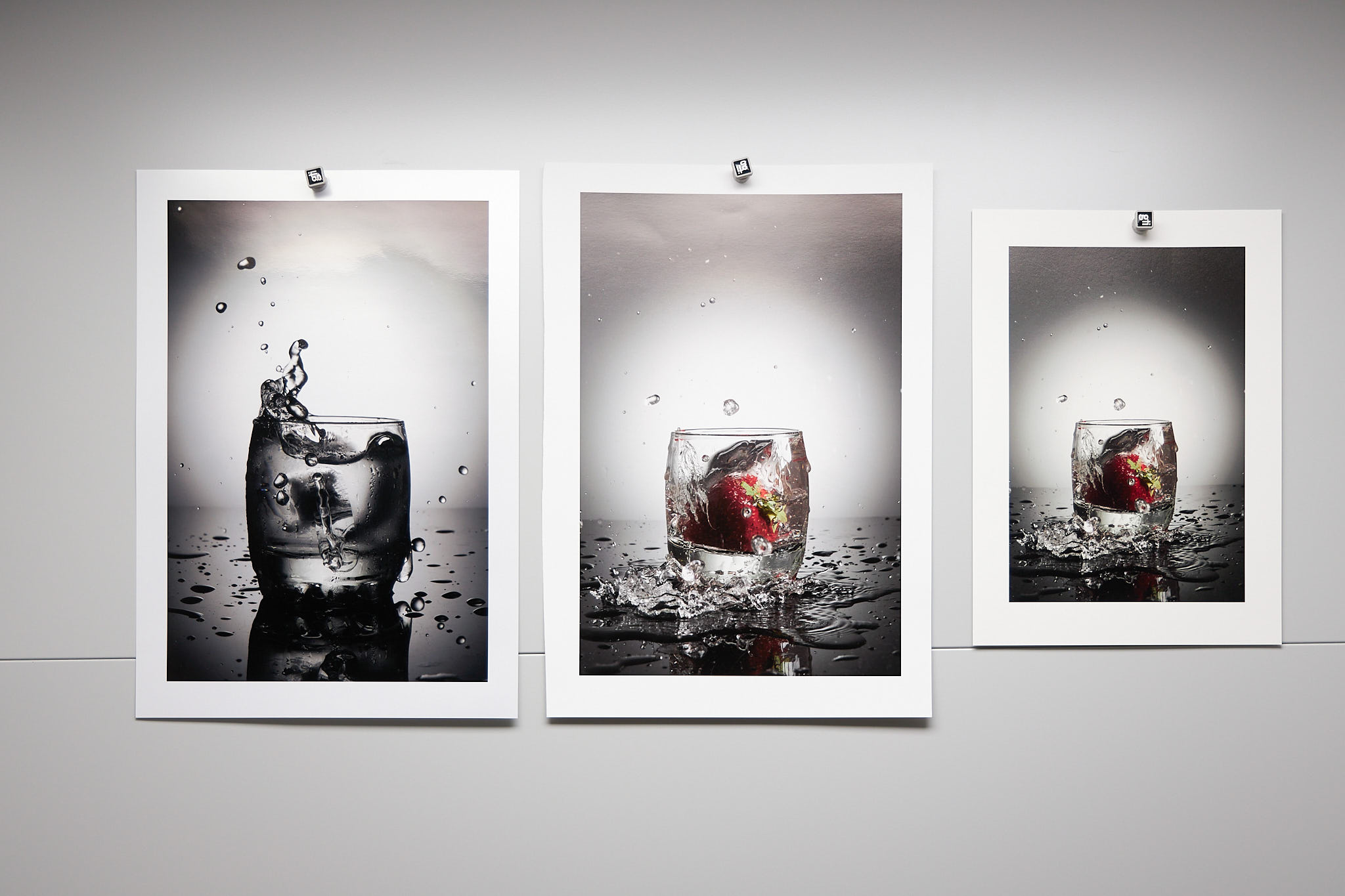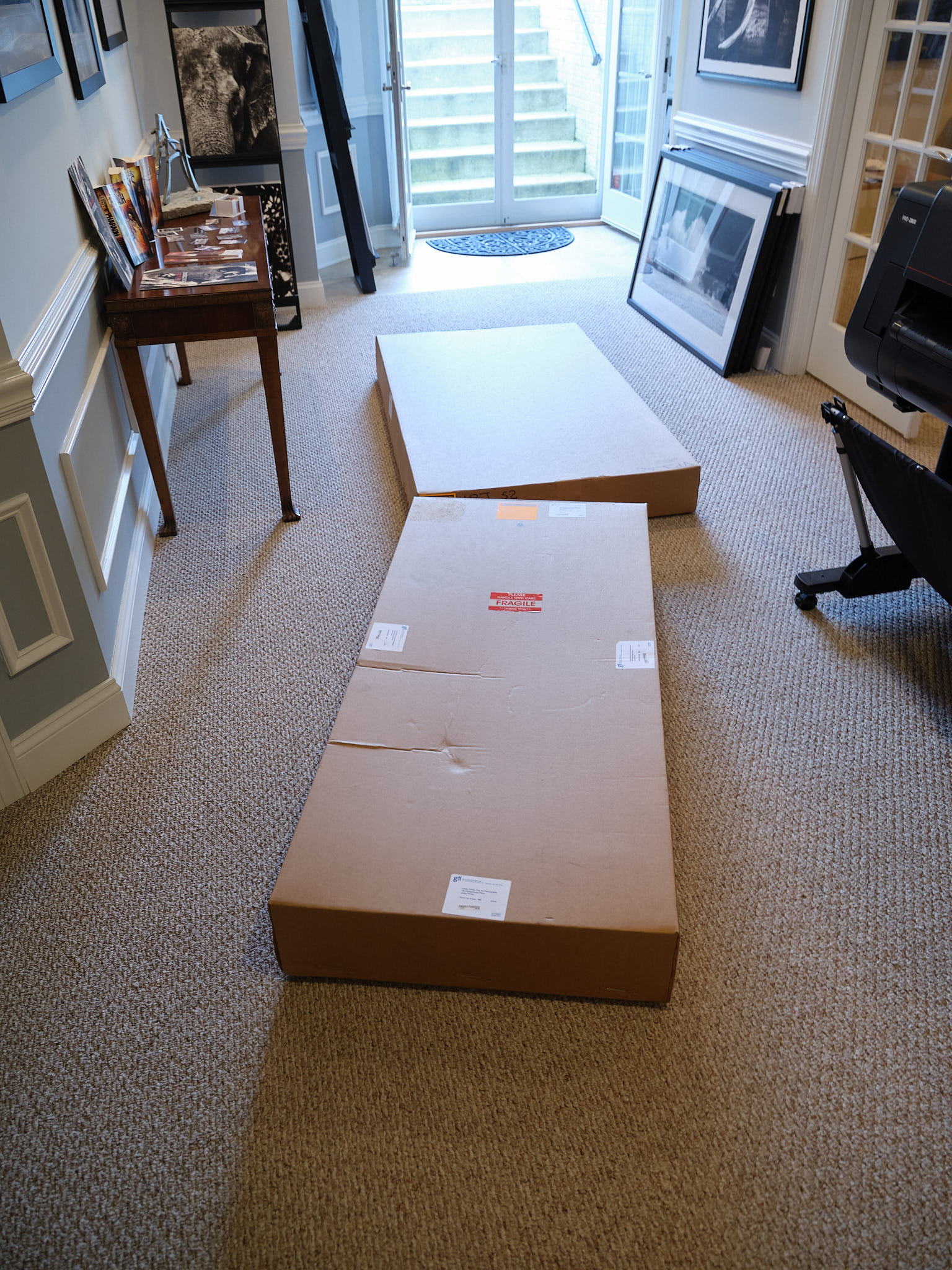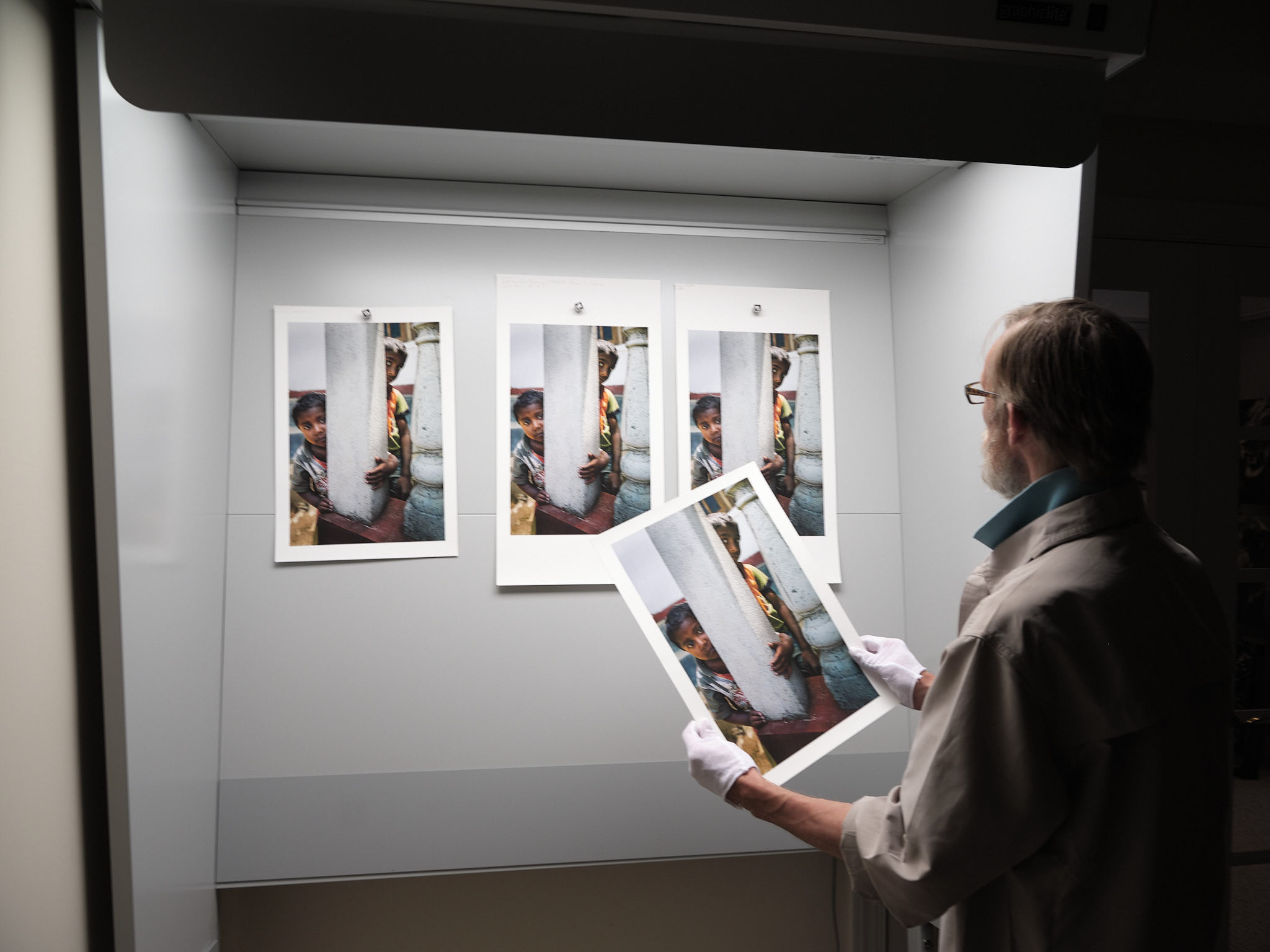
Is a Print Viewer in Your Future?
Well, we finally got our GTI Vertical Print Inspector. This is no small addition to our studio. I’ve been wanting one for years, but travel, workshops and the myriad distractions needed to run a business always provided ample excuses not to fully research and order one. But with Covid restrictions slowly easing, I made the call to GTI and placed my order. And yesterday the package arrived.

Why a Printing Viewing Station?
As most of you know by now I am a Moab Master Photographer, an X-Rite Coloratti and an Awagami Ambassador, meaning I love prints and the process of creating and displaying them. To get perfect prints you really need a solid color-managed work flow. And with the addition of the 52" wide GTI Print Inspector we finally have an end-to-end color managed workflow - from camera to computer to monitor to printer to final print.
We no longer have to rely strictly on our collective experience to judge whether the print colors are true. The GTI lamps house true D50 lighting, unlike the typical bulbs one has at home or even in most photographic studios. The neutral gray surrounds of the unit help one determine true print colors without color casts from walls or ambient lighting. The built in neutral, non-yellowing diffusers are another step up in ensuring true colors. This is especially critical when we teach our print workshops.
“True colors” means as close as you can get to the “standard” used in the industry of evaluating colors. Are standard viewing conditions important? Sure, it’s critical in some instances. But if that was important in your case you’d probably already know that. In a fine art or general photographic context the really important factor is “comparative evaluation”; having a really great way of evenly lighting prints, minimizing glare, minimizing reflections, and all getting rid of all sorts of color casts.
Why GTI?
Our reasons for choosing a GTI viewing station was brought home when we opened the carefully boxed contents. The packing was as tightly designed and secure as possible and the VPI-52 is sturdily built with perfectly pre-drilled holes and heavyweight hardware. Setup was a breeze, but takes two people. Just make sure that you examine every nook and cranny of the packaging to extract every piece of the unit. I had to make a panicked trip to the trash to retrieve a small piece I had overlooked.
When completed, the unit is an excellent addition to our studio and we look forward to many years of use. For those contemplating a GTI print inspection unit, we plan on some follow-up articles documenting its use in our workshops and for our daily printing needs.

Do You Need a Print Viewing Station?
Perhaps not. Or at least not a giant one like the VPI-52. But GTI makes an entire line of stations, including desktop units for home use.
Photographers complain to us frequently about the problems they have with proofing their images in preparation for printing. Part of the problem is with their monitor, which is why we use a BenQ Adobe monitor (SW 321C) for critical work. It has the finest proofing capability we’ve ever seen, in addition to its huge color gamut. That’s important to us as we try to craft that perfect print.
Sure, that’s a great help, but there’s nothing like looking at a finished print on your chosen paper for truly accurate proofing. In our studio we always make an 8.5 x 11" print before running a large format print through our Canon ProGraf printers. We require the same of our students. Ink and paper costs can add up quickly and with our volume of printing we find proof prints to be a time and money saver.
Naysayers that poo-poo print viewing stations have a valid point when they say that they are superfluous because ultimately most people will be exhibiting their prints in other than D50 lighting conditions anyway. True enough. I’ve seen prints displayed under incandescent lighting, fluorescent lighting, harsh picture window lighting, and in dark corners with hardly any light at all!
But if you don’t have a standard to go by you’ll never know what exactly it is in your workflow that is giving you inconsistent results. If nothing else I look forward to the GTI VPI-52 reducing the sound volume of arguments I get into with my Associate over a screwed-up print. In any event, I’ll be up dating our experience with the VPI-52 in future blogs, as well as explaining issues like why we view under D50 lights when our monitors are set to D65.